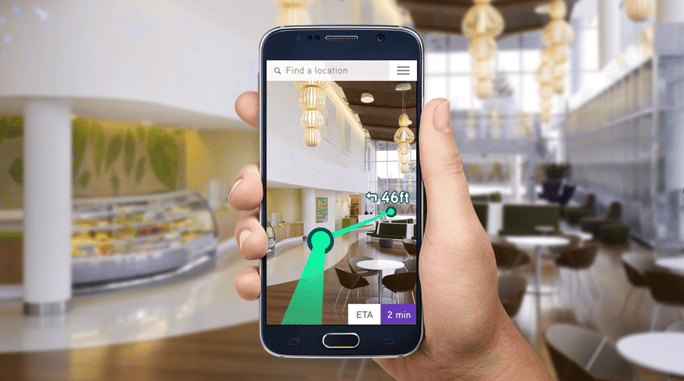I recently sat down with White Rhino’s healthcare practice leads, chief digital strategist Shawn Gross and VP of client services Tara Becker. With more than 15 years experience leading marketing for Boston’s top hospitals, I wanted their perspective on what 2017 holds. Shawn made a chilling comparison:
“Many hospital marketing departments are treated like Kinkos."
"They’re expected to churn out brochures and website copy," Shawn continued. "They are seen as cost centers instead of revenue drivers and often don't have a seat at the table when it comes to planning or supporting real strategic growth.”
Meanwhile, in other industries marketing is playing an increasingly strategic role and benefing from expanding budgets. According to Gartner’s research vice president Jake Sorofman, "Marketing is now responsible for critical customer-facing, revenue-generating systems and applications.” Gartner’s research shows that marketing budgets increased to 12 percent of company revenue in 2016, from 11 percent in 2015.
Will healthcare marketers gain an equally strategic – and well-funded – seat at the table with hospital leadership? According to Shawn, if hospital marketers play their cards right, then yes. “As marketing technology continues to play a greater role in supporting the hospital’s marketing, communications and overall branding efforts, digital engagement will be the path to significant strategic growth.”
I asked Shawn and Tara to identify 4 trends in consumer marketing that could help hospital marketers bridge the gap:
Personalization
Push marketing. Interruption marketing. Spray and pray. These terms are quickly dying among consumer marketers who are altogether shifting their approach towards inbound marketing. At its core, inbound marketing is about delivering the right content, to the right people, at the right time.
According to Accenture, 73% of consumers prefer to do business with retailers that create a personal, relevant shopping experience. From a consumer standpoint, it feels like 1-1 communication. But, it’s actually fueled by marketing technology (martech) that allows this kind of communication on a mass scale by turning data retailers have on consumer behaviors into targeted advertising.
In B2C marketing, these tools allow Shop Direct (a popular online retailer in the UK) to serve 1.2 million versions of its website to customers. Every customer sees different content and product recommendations based on their previous browsing behavior and purchase history. And Food Network has increased consumption of its video content 160% with a web-based algorithm to dynamically push relevant content to the right users at the right time.
Marketers in healthcare are beginning to follow suit. On the Ochsner Health website, users can indicate if they are a patient, provider, donor, or one of four other personas. The site then serves up content and navigation that best suits their needs.
Building on that, imagine if (after a user gives your website permission via opt-in) that you cookied users' activity on your site. Every page they visited and piece of content they downloaded fed an algorithm that automatically determined the next page or content asset to serve up. An expecting mother who starts clicking on information about a high-risk pregnancy might be served more content that educates her and puts her at ease about the risks. While a mother-to-be who has not expressed concern over a high-risk pregnancy would be served different content, so as not to overwhelm her about complications she probably doesn't have to worry about. A number of martech platforms are already powering this type of data-driven personalization for clients including Intel and J.P. Morgan.
"It's only time before this type of hyper-personalization takes healthcare by storm," thinks Shawn.
Omni-channel Experience
A recent study by the Harris Group reveals that 72% of millennials prefer to spend money on experiences rather than material goods. As the largest living generation in the world, this younger consumer is seeking new digital interactions with brands across industries – including healthcare.
In response, consumer marketers are working to deliver a better overall experience across channels: in-store vs. online; mobile vs desktop vs instore; pre-sales vs post-sales. They’re even looking at how they can pair channels together to facilitate an easier experience.
In healthcare, omni-channel means considering the brand experience you’re delivering not just during a patient’s hospital stay but also on your website, patient portal, and in post-surgery communications. “People expect an improved healthcare experience, in terms of how they interact with a facility before, during and after their care.” says Tara. “They want it to be easy and seamless to find information through the specific channel that appeals most to them.”
Historically, this has been difficult to achieve given the complexities of healthcare and the need for operational shifts in order to support technologies like CRM. But Tara and Shawn are optimistic that healthcare marketers will soon catch up to their B2C counterparts – in terms of technology and results. “As hospital marketers shift their focus on the entire customer experience they will create greater patient trust and loyalty with significant downstream effects on patient retention and patient volume,” replied Shawn.
Looking for some omni-channel inspiration? See how 7 brands including Disney, Bank of America, and Starbucks are doing it. Then read our popular 2016 blog, Is healthcare marketing due for its most drastic overhaul ever? to explore why hospitals too should focus more on the customer experience.
Augmented and Virtual Reality (AR & VR)
There is a lot of hype around AR and VR right now, and a lot of criticism that it’s just for gaming. The massive popularity of the AR app Pokemon GO last year didn't help the situation. But behind the spotlight, these emerging technologies are making a real difference in the practice of medicine:
- The University of Alabama Birmingham VIPAAR app lets experienced surgeons "scrub in" with a less experienced one. This has huge implications for military medicine, training residents, and delivering care in remote locations.
- Accuvein, an augmented reality device, helps clinicians get a better view of veins for drawing blood or administering injections.
- Cleveland Clinic and Case Western Reserve University are using the Microsoft HoloLens to visualize the patient body in ways never before possible.
- At the University of Washington Harborview Burn Center, patients put on VR headsets to immerse themselves in a virtual world and take their mind off the pain of daily bandage changes.
"VR and AR also have a very viable role in healthcare marketing," says Shawn. He told me about his vision of using Google Tango's AR capabilities to enhance hospital wayfinding by overlaying directional arrows on the live environment in front of you.

Shawn notes that B2B companies like Olympus use VR to drive interest and sales. He sees similiar potential for VR in healthcare marketing. "Imagine if, instead of emailing donors to raise money for your new facility, you could invite them to an open field and ask each partipant to try on a VR headset so they could see and walk around the future building." According to Shawn, similar technology is already successfully used in the real estate industry to allow homeowners to preview new construction. And, recent case studies have shown that using VR for fundraising in other industries leads to larger or more frequent contributions from donors because they can see and experience where their money is going.
Artificial Intelligence (AI) and Chat Bots
In this increasingly digital era where consumer research and purchasing is happening more and more online, companies are beginning to experiment with AI-powered chatbots to handle simple, quick-response questions that guide users to the information they need most.
Many of us are familiar with the AI powering our beloved Siri and Amazon Echo. And we all know how IBM Watson is using AI to revolutionize how we diagnose patients. But in marketing, many B2C brands are also taking full advantage of this technology. Sephora’s Kik app prompts users for information about themselves to offer personalized beauty tips and product recommendations. Uber released a chatbot within Facebook Messenger that allows customers to request a ride via a simple text. In the B2B space, x.ai is a digital assistant that schedules meetings for you through email conversations with your colleagues.
What role could chat bots play in healthcare marketing? Tara suggests a good starting place: online appointment scheduling. Research shows that, as online appointment scheduling becomes more accessible, more and more consumers are taking advantage. According to a report by Google, of patients who found hospitals on their mobile devices, 44% scheduled an appointment.
Ascension Health, the nation’s largest nonprofit health system, has seen that even with only modest marketing, consumers quickly discover and use online scheduling for physician, urgent care, radiology and even emergency department services.
And Ascension has also found that typically 30 percent of people who use online scheduling are completely new to the health system – further demonstrating that digital engagement can in fact lead to significant business growth.
What trends have you spotted in consumer marketing that are taking shape in healthcare? We’d love to hear from you.



